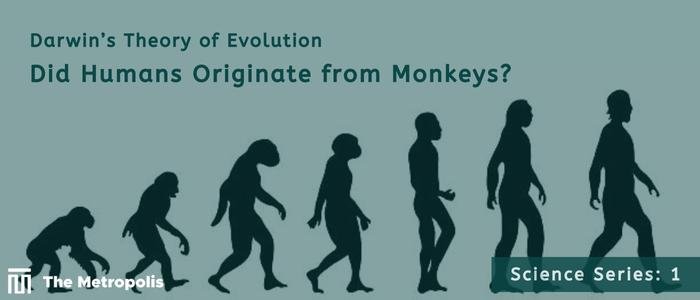Darwin’s Theory of Evolution – Did Humans Originate from Monkeys?
Aziz Hawaldar –
There has been a long-running debate regarding the beginnings of human evolution and the part that monkeys and apes play in that. Darwin’s theory of evolution, which contends that people descended from a common ancestor with apes and monkeys, sparked debate and opposition from religious groups who hold that people were made in the image of God.
Now if we ask – did Darwin claim that humans evolved from monkeys? The answer is No! Darwin proposed the theory of evolution through natural selection, which suggests that species can evolve through hereditary qualities that improve an individual’s capacity for survival and reproduction. Rather than deriving from a single ancestor, humans and monkeys have a common ancestor who lived millions of years ago.
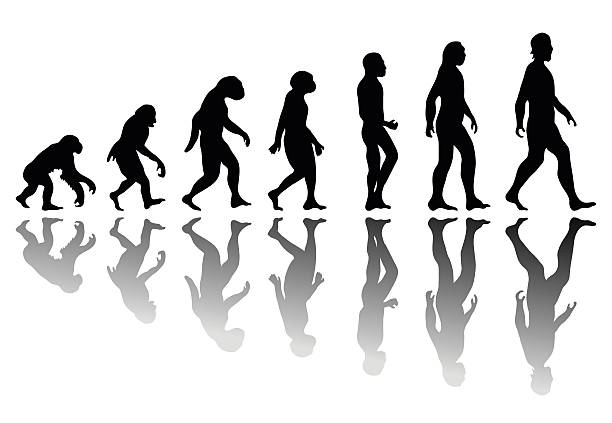
The theory of evolution was founded on the fact that organisms have a variety of traits that are handed down from one generation to the next, including physical qualities and behavior. These traits are subject to variation, and those that are beneficial to the organism’s survival are more likely to be passed down to future generations. This process is known as natural selection.
Natural selection essentially works by choosing the most capable people to live and reproduce, passing on their advantageous features to their progeny. These beneficial features spread within a population over many generations, which triggers the creation of new species.
The process of evolution is long and gradual, taking place over many generations. It is also cumulative, which means that little adjustments add up over time to produce a substantial evolutionary shift.
The theory of evolution was first proposed by Charles Darwin in 1859, in his book “On the Origin of Species”. It was based on his research into the flora and fauna of the isolated archipelago known as the Galapagos Islands, which are off the coast of South America.
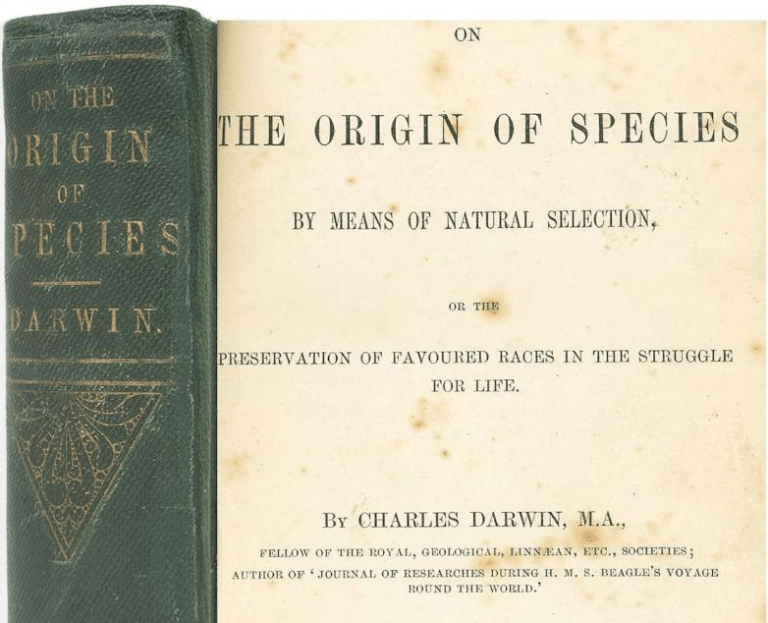
Darwin observed that every plant and animal species on the islands was distinct and adapted to its habitat. For example, he noticed that the finches on the islands had beaks of different shapes and sizes, suited to their diets and habitats. He understood that natural selection was responsible for these adaptations.
Darwin conducted several tests to verify his theory. His study on the domestication of pigeons is one of the most well-known. To illustrate how differences in features could be selected for or against through the process of natural selection, he produced pigeons with certain traits, such as feather color, size, and form. Darwin demonstrated through the selective breeding of pigeons that new variations in features might develop through time, resulting in the evolution of new species.
Darwin’s investigation of the Galapagos Islands’ vegetation and fauna was another significant experiment. The dimensions of each species’ bodies, the length and width of their beaks, the color and pattern of their feathers, and other physical traits were all meticulously noted by him. In his research, he discovered that the species on each island were unique from those on other islands, indicating that they had each undergone a unique process of evolution in response to the unique conditions and surroundings of that island.
Darwin also investigated how plants and animals interacted with their surroundings. He watched their interactions with their environment, including how they found food, reproduced, and fought for resources with one another. He discovered that each species’ behavior was influenced by its adaptations, which enabled it to survive and procreate more successfully.
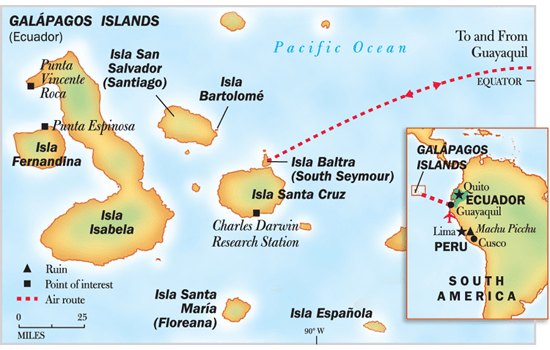
Darwin utilized information from other scientists and naturalists in addition to his tests and observations to support his theory. To prove that species had developed over millions of years, he researched the fossil record, which revealed that species had altered through time. Further support for the theory of evolution by natural selection was found when he examined the distribution of species around the globe and discovered that each continent’s species was adapted to the particulars of its environment.
The theory of evolution has been widely accepted as the best explanation for the diversity of life on Earth. It is supported by a vast body of scientific evidence from many different fields, including genetics, paleontology, and comparative anatomy.
Before Darwin, creationism was the dominant theory for the diversity of life, which held that all species were created as independent and distinct entities by a divine being. However, Darwin’s theory disproved conventional religious notions about the origins of life and offered proof for the natural origins of species.
In the late 19th and early 20th centuries, the theory of evolution was further developed and expanded by scientists such as Gregor Mendel, who discovered the laws of inheritance, and Thomas Huxley, who popularized the theory and defended it against religious opposition.
The theory of evolution was extensively accepted by the scientific community by the middle of the 20th century, and it had been incorporated into the disciplines of biology, genetics, and paleontology. This was partly brought about by recent discoveries, such as the identification of DNA and the genetic code, which added to the body of evidence supporting evolution.
The theory of evolution has also been integrated into the study of human evolution, which provides a scientific explanation for the development of humans from early primates. The discovery of early hominid fossils, such as Australopithecus, provided evidence for the evolution of humans from a common ancestor with other primates.
Proconsul, the earliest species of primates, originally arose roughly 25 million years ago. A group of primates known as hominids first arose about 5-7 million years ago after several kinds of primates diversified over time. These primates, which included species like Sahelanthropus, Orrorin, and Ardipithecus, were the first hominids to walk with a gait resembling that of a human and to hold themselves somewhat erect.
Australopithecus Afarensis, also known as Lucy, is one of the most well-known hominids. It is believed that this creature, which lived about 3.2 million years ago, is a direct ancestor of humans. Lucy stood about 4 feet tall and had a brain volume of about 400 cubic centimeters, which is considerably less than the 1300 cubic centimeters that the average human brain has.
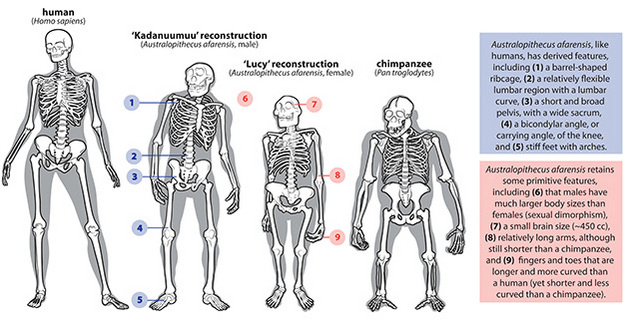
Hominids kept changing over time and acquiring new skills that helped them survive. Homo Habilis is a species that first emerged around 2 million years ago. This species had a larger brain than earlier hominids and were the first to create and use tools. Homo Erectus, the first hominid species to leave Africa and travel outside of Africa, was the species that came after this one.
Homo Heidelbergensis, a new species of hominid, first arose about 800,000 years ago. This species was able to make sophisticated tools and weapons and had a larger brain. Homo Heidelbergensis evolved into Homo Neanderthalensis, the first hominid species to have a brain size that was comparable to modern humans, about 300,000 years ago.
Finally, Homo Sapiens, a new kind of hominid, emerged some 200,000 years ago. The first hominid species to have a brain that was bigger than any other species before it was this one. Other traits that set Homo Sapiens apart from earlier species were a more sophisticated language, the capacity to build large civilizations, and a higher degree of environmental adaptability.
Though the precise steps in the evolution of humans from primates are still not fully understood, scientists have made great strides in their comprehension of the different stages. For instance, researchers have shown that a large number of genes in the human genome originated in apes, which is compelling evidence in favor of evolution. In addition, several fossils and artifacts have been discovered by experts that depict the various stages of human evolution and paint a clear picture of how humans descended from apes over the course of millions of years.
Comparative anatomy is a significant additional piece of evidence for human evolution. This entails comparing the anatomical structures of various species to see how similar they are. According to research, there are many anatomical similarities between humans and primates, including the shape of their teeth, bones, and brains. Researchers have analyzed the DNA of humans and primates and discovered significant similarities between the two species. These similarities imply that humans and primates originated from a single ancestor and have since evolved from this ancestor.
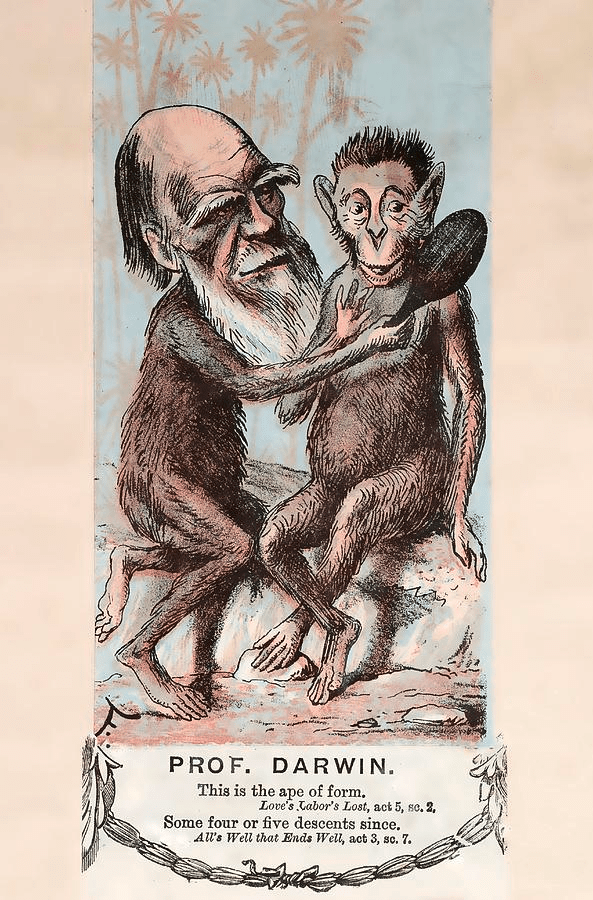
Despite its widespread acceptance, the theory of evolution has been the subject of much debate and controversy. Some religious groups have taken issue with the idea that humans evolved from a common ancestor with other primates, while others have questioned the mechanism of natural selection itself. The common arguments have been as follows:
-
Evidence for Evolution: Many species appear abruptly in the fossil record rather than gradually evolving, according to critics who claim that there is insufficient evidence for evolution.
-
Mechanisms of Evolution: Some scientists doubt the Darwinian methods of evolution, including natural selection and sexual selection, and they cast doubt on the contribution of chance occurrences and mutation to the evolution of species.
-
Origin of Life: Critics argue that Darwin’s theory does not explain the origin of life, which is a major gap in his theory.
-
Purpose of Evolution: Some religious organizations contend that evolution refutes the notion of a purposeful creation of life and diminishes people to mere animals with no intrinsic worth or value.
-
Fossil Gaps: The theory of evolution through natural selection is contested by critics who point out that there are numerous gaps in the fossil record and that certain species seem to have altered very little over time.
-
Intelligent Design: According to proponents of intelligent design, evolution alone cannot account for the complexity of living things, particularly the human brain, and it is thus necessary that an intelligent creator was involved.
-
Social and Cultural Implications: Some people reject the theory of evolution because they believe it has unfavorable social and cultural ramifications, such as the denial of established norms and beliefs.
Despite criticisms, the theory of evolution remains a focus of significant research and discovery, and new information is constantly being added to our understanding of how evolution works. The theory of evolution is also being utilized in other industries, including health and agriculture, where a better comprehension of how species have evolved can be used to create novel therapies and methods for boosting crop yields.
In conclusion, Darwin’s theory of evolution by natural selection is one of the most important scientific theories of all time. Through his experiments and observations, Darwin offered a convincing explanation for the diversity of life on Earth and he demonstrated how species have changed over time in response to the demands of natural selection. His work is still a major contributor to our understanding of the natural world and inspires scientists and researchers today.



